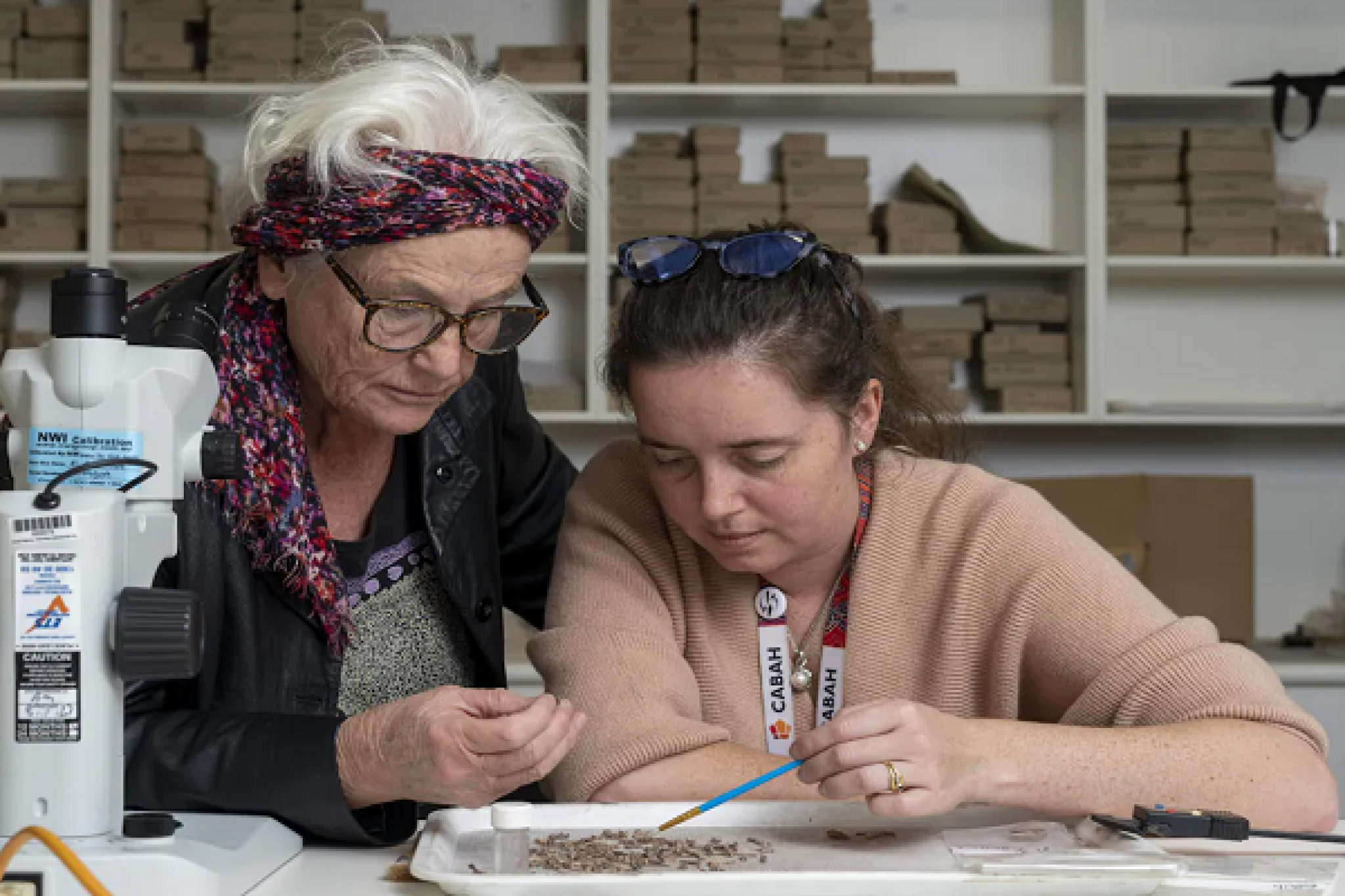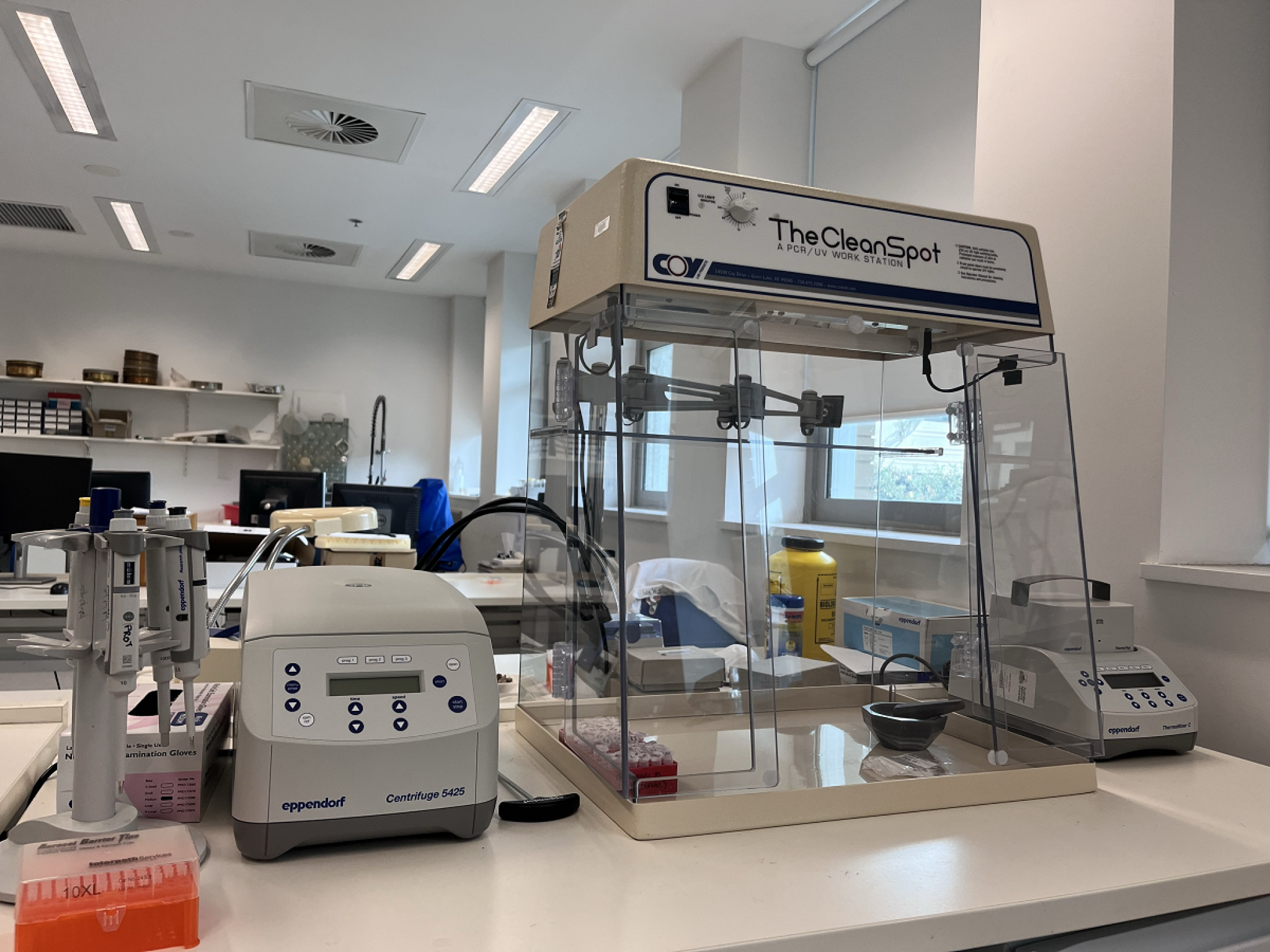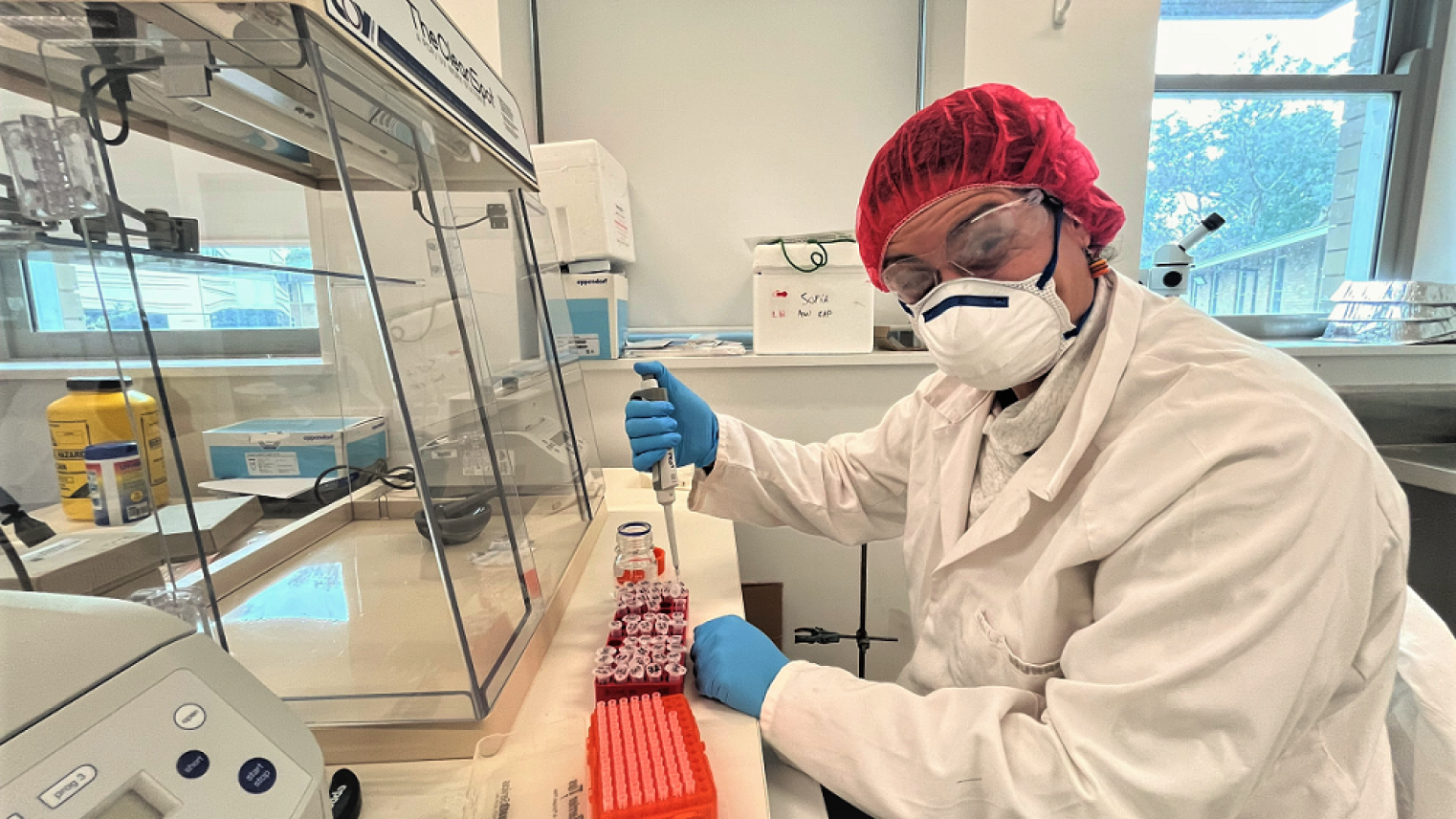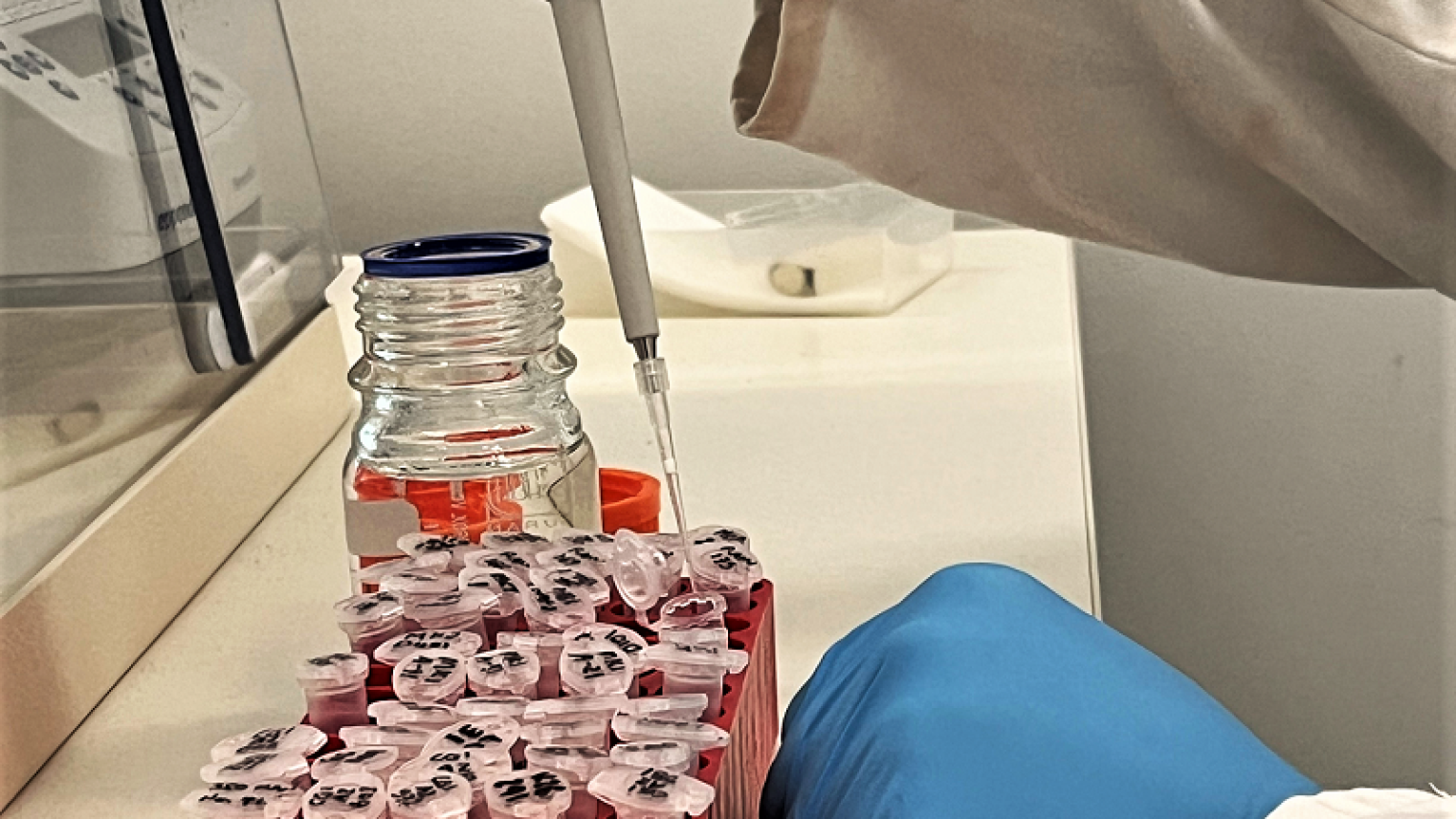The Archaeology and Natural History department's laboratories house state-of-the-art equipment for the exploration of environmental and archaeological questions.
The Archaeology and Natural History department's laboratories house state-of-the-art equipment for the exploration of environmental and archaeological questions.

ANH houses eight research laboratories (including three quarantine laboratories) and one teaching laboratory.
Our direct mercury analyser allows for the detection of mercury in sediment, soil, biological and water samples.
Our desktop SEM allows for the high resolution imgaging as well as elemental analysis of macroscopic and microscopic remains such as charcoal, textiles, archaeological material and pollen.

Research supported by our laboratories includes prehistoric textiles, archaeobotanical remains, rock art, faunal material, lithics, and ceramics.

The ANH laboratories host the only facility in Australia focused on the analysis of ancient bone proteins through shot-gun proteomics. We house high precision balances, decontamination UV clean box, benchtop centrifuge, thermomixer and dedicated pipettes for sample preparation. For more information, contact Dr Sofia Samper Carro.



We maintain the largest pollen reference collection in Australia, as well as excellent plant, bone, shell and obsidian collections.
With a wide range of optical microscopes and a scanning electron microscope, we can analyse artefacts, pollen, charcoal, phytoliths and diatoms from both ancient and modern sites.

Our research aims to understand past human societies, the environments in which they developed and the environmental consequences of human presence.
